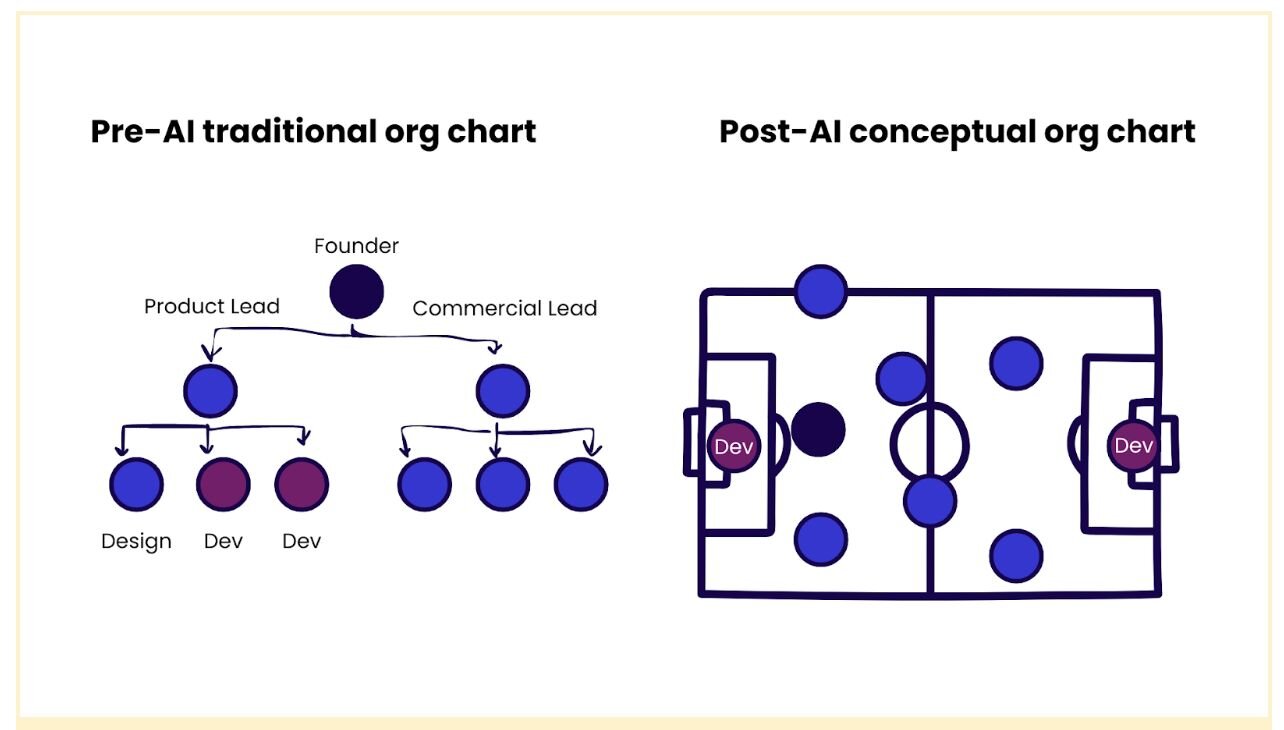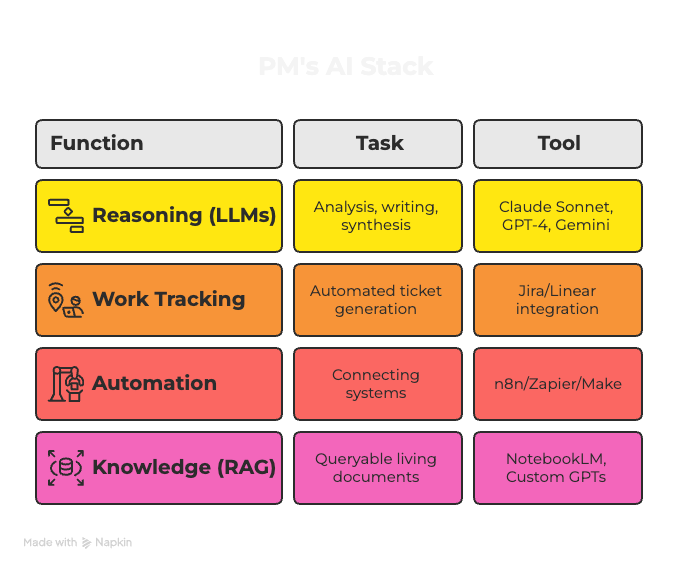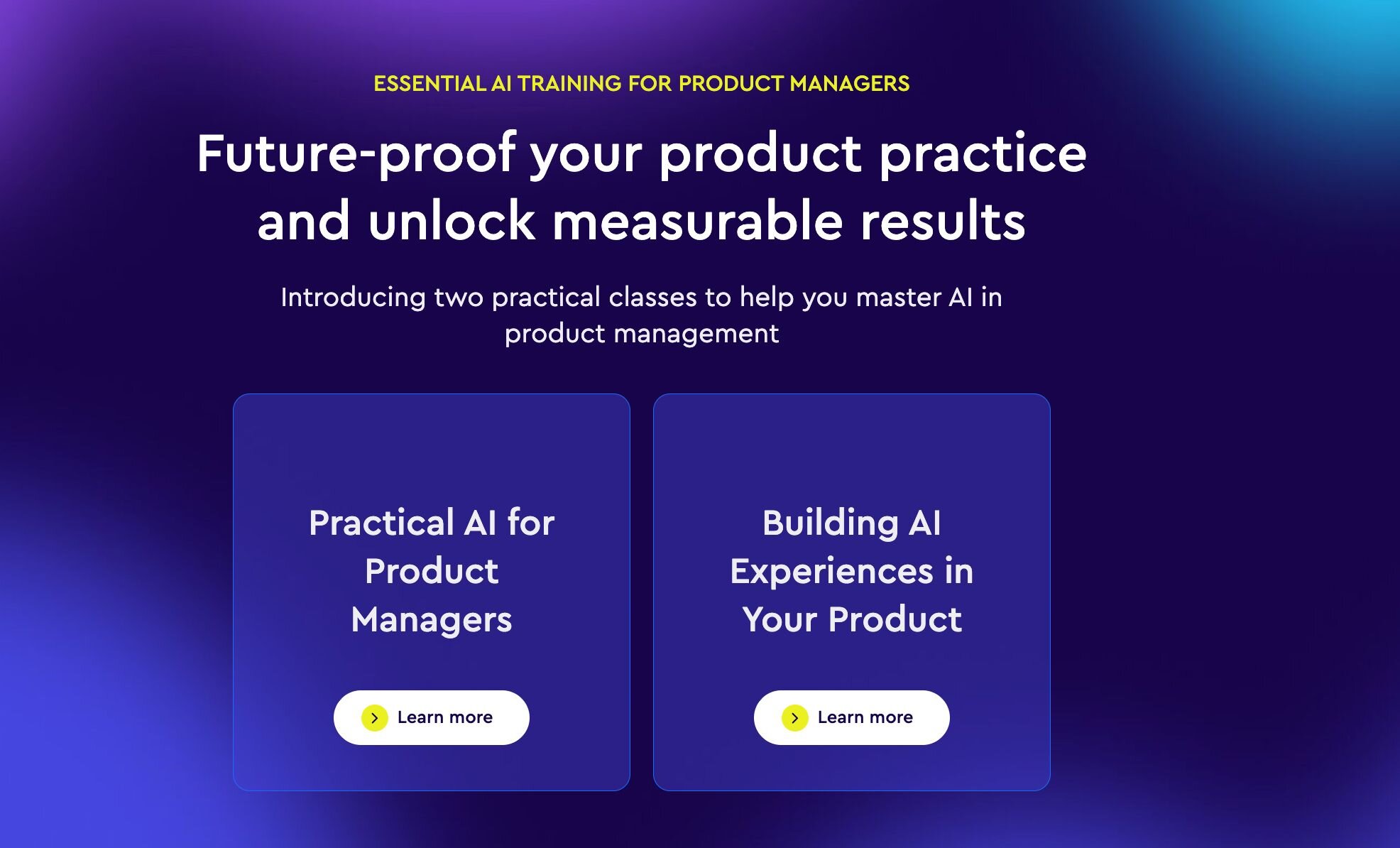The rise of artificial intelligence (AI) in the product management landscape feels like a sci-fi movie coming to life. It promises to automate tasks, personalize experiences, and optimize decision-making – all things product managers dream of. Is artificial intelligence (AI) going to be our friendly neighborhood robot or our ultimate Terminator?
As usual, the reality is more complex. AI in product management isn't a binary friend or foe; it's a complex tool with immense potential for both collaboration and disruption. Like any powerful tool, it's how we wield it that matters.
AI, the automation ally:
Imagine Sarah, a product manager juggling feature prioritization, user research, and competitor analysis. She could spend hours analyzing user feedback from different forums. Enter AI: a sentiment analysis tool that automates this process, identifying key concerns and trends in seconds. This frees Sarah's time for deeper analysis and strategic decision-making.
AI can also automate repetitive tasks like A/B testing, data analysis, and content personalization. This frees up valuable product team bandwidth for higher-level activities like user journey mapping, defining product vision, and fostering innovation.
AI, the insightful partner:
Beyond automation, AI unlocks a deeper understanding of users. Imagine a recommendation engine that goes beyond a simple purchase history. It analyzes social media activity, emotional responses to features, and facial expressions to predict what users truly need. This data-driven approach helps product managers build features with a laser-sharp focus on user preferences.
AI can also be a powerful research tool. Imagine conducting user interviews enhanced by real-time sentiment analysis, gauging emotional reactions to prototypes, and identifying unspoken needs. This deeper understanding enables product managers to create truly user-centric solutions.
Case study: Automated content moderation and fraud detection
Launch Date: September 2023.
Gumtree: As a product manager at Gumtree, I am tasked with tackling the growing problem of inappropriate content and fraudulent listings on the platform. Together with the team, I explore the potential of AI-powered solutions for automated content moderation and fraud detection.
Challenges:
- Best solution: Analyzing and proposing the best solution for Gumtree to engage, that meets Gumtree’s immediate needs and future capabilities.
- Accuracy and nuance: Training the AI model to accurately identify inappropriate content while avoiding false positives (flagging legitimate content) was crucial. Balancing automation with human oversight for complex cases was necessary.
- Evolving tactics: Fraudsters constantly adapt their methods. The AI model needed to be continuously updated to stay ahead of evolving tactics and prevent new forms of fraudulent activity.
- Transparency and user trust: Maintaining user trust in the platform meant being transparent about how AI was used for moderation and ensuring a fair appeals process for flagged content.
Vendor analysis and third-party engagement:
To implement automated content moderation and fraud detection, Gumtree considered engaging a reputable third-party vendor specializing in AI solutions for online marketplaces. The process of achieving this includes the following:
- Identifying potential vendors: Research companies with proven expertise in AI-powered content moderation and fraud detection solutions. Look for vendors with experience in similar industries (online classifieds) and a strong track record of successful implementations.
- Vendor selection: Develop a shortlist of potential vendors based on factors like:
- Technical capabilities and expertise in relevant AI techniques.
- Experience with data security and privacy compliance.
- Scalability of the solution to accommodate Gumtree's user base and growth.
- Cost-effectiveness and pricing models.
- Vendor evaluation and integration: Conduct in-depth evaluations involving demos, reference checks, and discussions around:
- The vendor's approach to AI model training and bias mitigation.
- The level of human oversight and intervention integrated into the system.
- The process for integrating the AI solution seamlessly with Gumtree's existing platform.
Success Metrics:
The success metrics for the solution include:
- Reduction in inappropriate content: The success of the AI moderation system was measured by the decrease in flagged content and user reports of inappropriate listings.
- Detection and prevention of fraudulent activity: Metrics like the number of fraudulent listings intercepted and the associated financial losses prevented were tracked.
- Improved user experience: Faster review times for flagged content and a cleaner platform experience for legitimate users contributed to overall user satisfaction.
Team Size:
This involves a team of 5-7 people, including:
- The product manager, overseeing the project and ensuring alignment with user needs and business goals.
- A data scientist responsible for data preparation and training the AI model.
- An AI engineer responsible for maintaining and improving the model's performance.
- The backend developer and security specialist, collaborate with the solution providers on the necessary integrations and to ensure the system's robustness against potential exploits.
- A content moderation expert to provide input on content guidelines and review flagged cases.
Knowledge gap:
Bridging the knowledge gap involve:
- Internal training: Sessions on AI basics, content moderation strategies, and potential biases in AI models.
- Collaboration with external experts: Consulting with the solution’s (AI security) specialists and content moderation professionals for best practices.
Specific AI Techniques:
Gumtree leverages natural language processing (NLP) to analyze listing text for inappropriate content and identify potential scams. Image recognition is used to detect prohibited items in product listings.
- User education: Gumtree implements clear communication with users about the automated moderation system. This include:
- Explanatory messages are displayed when listings are flagged.
- FAQs and help center articles outlining the types of content prohibited on the platform.
- Educational campaigns highlighting the importance of a safe and secure online marketplace.
Human oversight and intervention:
While AI automates content moderation and fraud detection, a human review process remains in place for flagged listings or user appeals. This ensures a balance between automation and the ability to address complex or nuanced situations.
Scalability and future-proofing:
The chosen AI solution is scalable to accommodate Gumtree's growing user base and future platform enhancements. Gumtree also considers the ability to integrate new AI techniques and adapt to evolving content moderation and fraud detection needs.
Legal and ethical considerations:
Gumtree ensures the AI solution adheres to relevant data privacy regulations and user consent practices. Addressing potential biases in the AI model and ensuring fair and unbiased content moderation is crucial.
However, the AI friend comes with caveats:
While AI's potential is undeniable, it's not a magic bullet. Overreliance can lead to black-box decision-making. Imagine an AI-powered recommendation engine that perpetuates biases in the data, leading to unfair outcomes. Product managers must remain vigilant, understanding how AI works, questioning its outputs, and ensuring ethical implementation.
Furthermore, AI can't replace the human touch in product management. The empathy, creativity, and strategic thinking of a good product manager are irreplaceable. AI can be a powerful tool, but it's the human who wields it with purpose and responsibility.
Navigating the AI landscape:
So, how can product managers leverage AI without becoming obsolete? Here are some key strategies:
- Focus on the "why" behind the data: AI provides insights, but interpreting them and making strategic decisions based on human understanding is crucial.
- Develop a strong understanding of AI capabilities and limitations: Don't be a black box yourself. Know what AI can and can't do to make informed decisions about its use.
- Prioritize ethical considerations: Build AI-powered products that are fair, unbiased, and transparent in their operation.
- Embrace lifelong learning: Stay updated on the evolving AI landscape and continuously develop your skills to complement, not compete with AI.
The Future of product management: Collaboration is key
Instead of fearing AI as a foe, product managers should view it as a powerful collaborator. By understanding its strengths and limitations, harnessing its potential responsibly, and focusing on their unique human skills, product managers can create a future where AI augments their abilities, leading to innovative products that truly delight users.
Ultimately, the answer to "friend or foe" isn't a simple one. AI in product management is a complex dance, requiring collaboration, vigilance, and a commitment to ethical and responsible use. By embracing this dance, product managers can lead the way to a future where AI amplifies their human ingenuity, creating products that positively impact the world.
Explore more great product management content by exploring our Content A-Z







